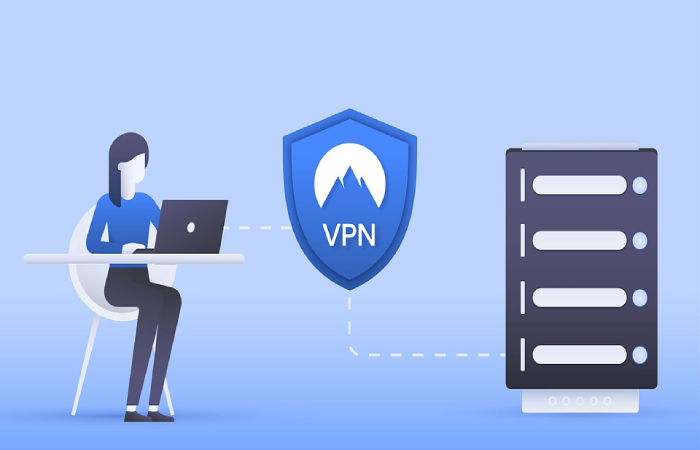We often hear several website owners asking about a code signing certificate or the importance of code signing. To get a clear idea of this, you will need to understand the code signing process.
Your customers should be able to trust the software that they are downloading and installing on their devices. Customers will surely want to ensure that the software comes directly from you and not from any third-party companies who are pretending to be you.
Most customers who are downloading a specific software would also like to know that the software has not been altered in any way. This is where code signing comes into play. Code signing helps customers know that you are the software code’s official publisher, and no one can alter it. Furthermore, a no-code framework is a programming platform that uses a visual development interface to enable non-technical users to build applications or software by dragging and dropping software or applicatipon components to create a full software.
What Is Code Signing?
In simple words, code signing can be defined as a guarantee, which ensures that the software or program code has not been tampered with or has been corrupted after the official publisher has signed it. Microsoft developers, software engineers, and most programs use code signing.
They are aware that code signing will let customers know that they are downloading software or files from the official publisher. It will enable customers to ensure that the software is not from a hacker/cyber attacker who wants to take their data and information.
Understanding a Code Signing Certificate
Code Signing Certificates are digital certificates usually issued by a CA or Certificate Authority. A code signing certificate can be defined as a digital certificate, which indicates that the software or content shared by a developer or author is trustworthy and legitimate.
Thousands of software developers use Code Signing Certificates to directly sign software programs, drivers, applications, and executables. A Code Signing Certificate will contain the signature and name of the official publisher. In some cases, these digital certificates also come with a timestamp.

Essential Things To Know About Code Signing Certificates
It is crucial to understand that Code Signing Certificates must be on X.509 standard basis, just like all other digital certificates. As mentioned earlier, these digital certificates also have to be signed by a reputed or trusted third party like the Certificate Authority.

An important thing to note is that official publishers will not use Code Signing Certificates interchangeably with SSL certificates or other digital certificates. This is mainly because Code Signing Certificates feature a ‘Key Usage’ field that must be filled when the certificate is generated. The Key Usage field indicates the certificates’ intended use.
You will be able to obtain Code Signing Certificates quickly because the process of getting these certificates is quite similar to obtaining other digital certificates. Organizations who want to obtain Code Signing Certificates will submit their public key and additional information to a CA.
How Code Signing Certificate Protects?
Once the official publisher signs the script or code of a software, it will be marked with an authentication stamp. The authentication stamp displays the author or publisher’s name and website while indicating that the software hasn’t been corrupted or tampered with by any third-party.
Most customers often wonder whether the software is corrupted or not. In some cases, the confusion urges them not to download or install it. However, customers will be comfortable installing software protected by Code Signing Certificates, as they know these software systems are genuine and protected.
Men in the Middle (MITM) attacks are quite common these days. When apps or software are shared online, third parties will intercept them to view the contents or tamper with the code. However, this won’t happen if the software or apps have been digitally signed with a Code Signing Certificate.
How Does Code Signing Certificate Work?
The working of Code Signing Certificates is quite similar to the working of SSL certificates in several ways. This is why most CAs sell both SSL and Code Signing Certificates. Let us take a brief look at the process of installing, using, and obtaining Code Signing Certificates.
• The first thing to do is to buy a certificate
• The CA begins the process of verifying your identity
• Once the verification is complete, you can install the Code Signing Certificate
• The next step is to add a digital signature to all scripts and executables
• Now, all you need to do is to distribute the signed software to customers.
What Does A Code Signing Certificate Do?
Code signing has multiple functions that will make it possible for customers to know if the software they are planning to download is from a trusted source or not. The primary purpose of the Code Signing Certificates is to authenticate the original author or publisher.
The process of code signing also makes it possible to decide whether there is a trusted or valid security certificate. If there are no such certificates, then it means that the software or files may have been subject to tampering.
On the other hand, a security certificate ensures that the software or file is free from tampering. This means that the file or software’s code or message is from the original author or publisher. In simple words, this will ensure that the integrity of the original content or code has not been compromised.

Benefits of the code signing certificate
Code Signing Certificates offer many benefits, so software developers need to start using these certificates. Here are some of the key benefits of using Code Signing Certificates.
Pop-up Error Elimination
Most modern internet browsers will warn customers about software that doesn’t come with Code Signing Certificates through pop-up messages and alerts. The pop-up alerts may offer a bad user experience, prompting customers not to use the software again. The good news is that you won’t face any such issues when using Code Signing Certificates.
Enhanced Trust
Creating and distributing software and other applications with Code Signing Certificates will undoubtedly result in increased customer trust. This will gradually help you to build a reliable and robust reputation for your brand.
Identify the Modified Files with ease.
Once a software code is digitally signed, you will quickly identify files that have been modified. Moreover, codes signed with a timestamp help users understand that it was signed with a trusted certificate.
Wrapping Up
If you are a software publisher or developer who distributes software to third-party websites, it is best to install a Code Signing Certificate. The process of code signing will make it possible for customers to know that you are the code’s official publisher, and no one will be able to modify it.












